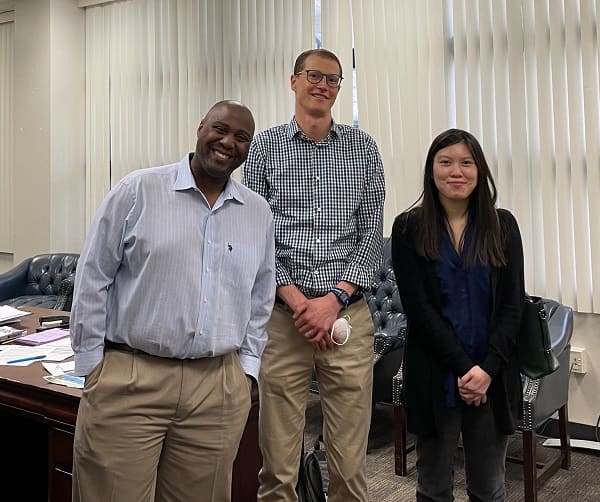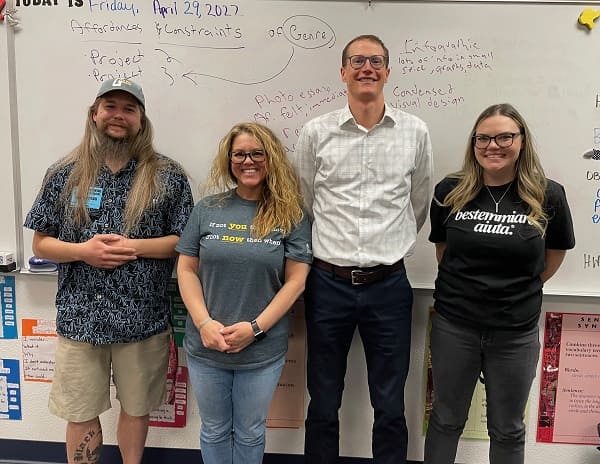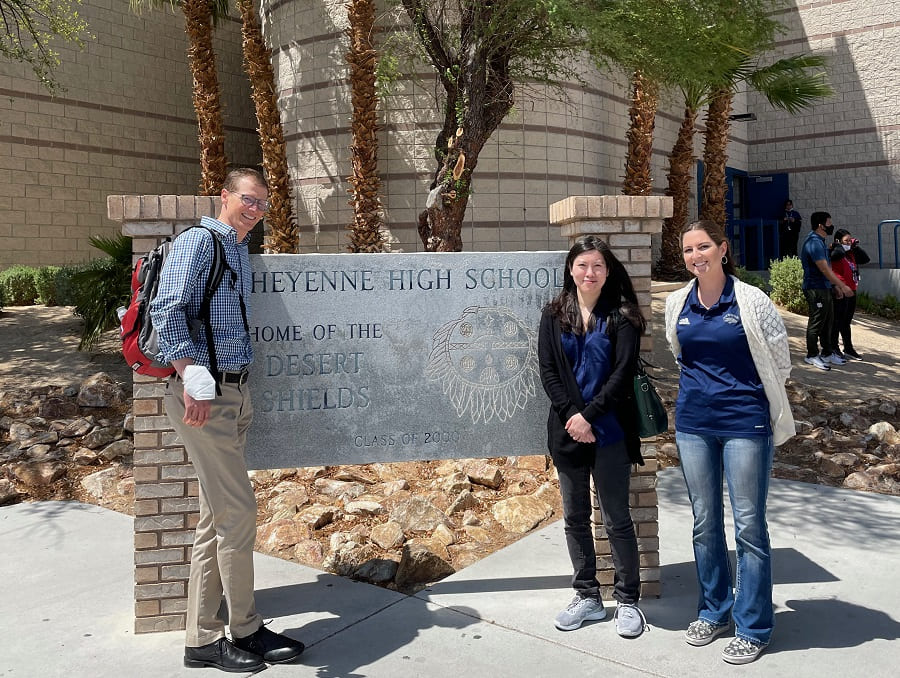Close relationships between highly capable high school teachers and focused faculty at the University of Nevada, Reno, provide a cornerstone for a pilot program that builds confidence among high school students while they earn university credit.
About 450 juniors and seniors at two Clark County High Schools are enrolled this year in college-level English, mathematics and social studies classes whose teachers work closely with University faculty to ensure the curriculum meets University standards.
The program has been so successful in its first year that it will be expanded to six high schools in Clark County and two in Washoe County in the next academic year.
Concurrent enrollment allows high school students to get an early start toward a college degree. If they start the courses as juniors, they could earn as many as 15 University credits while they’re still in high school.

“Receiving college credits and college materials allows students to begin to look at their college potential and begin to think beyond high school,” Keith Wipperman, principal of Centennial High School in Las Vegas, one of the participating schools, said. “I think it is critical to have educational opportunities that push students to higher levels of thinking and understanding.”
Equally important is the boost to students’ self-assurance.
“We’re demonstrating that these students are not just college-ready. They’re college-proven,” Zachary Robbins, principal of Cheyenne High School in North Las Vegas, the other school in this year’s pilot program, said. “This boosts their confidence, and it affirms their confidence in themselves.”
The concurrent enrollment program is different from the advanced-placement classes that provide college credit to some high school students. An advanced-placement class generally requires a year-end test to determine if college credit will be awarded — an all-or-nothing outcome. Students in concurrent enrollment classes know they’ll earn college credit upon successful completion of coursework.
Marnie Penkalski, an English teacher at Centennial High School, said the program exposes students to reading and discussion they wouldn’t ordinarily encounter in high school.

“I like the discipline it requires from students,” Penskalski said, adding that students are likely to be even more serious next year when they’ll need to meet new criteria and formally request to be included. (This year, all seniors scheduled for English Honors were automatically placed in a concurrent enrollment class.)
Robbins said the concurrent enrollment program is particularly important in fostering equitable access to college-level courses for students whose high schools aren’t in the middle- or upper-income neighborhoods where advanced-placement courses are more common.
When the program was rolled out last autumn, few envisioned that it also would play a role in strengthening the skills of participating high school teachers. Yet, that’s precisely what happened.
“This program has challenged me to be more in touch with how material is being taught across the board,” Grace Bayer, an English instructor at Cheyenne High School, said.
University faculty stay in close contact with their peers at the two high schools.
“The University has been extremely helpful in providing high-quality professional development for our instructors,” Wipperman said, pointing to the two-way sharing of ideas during weekly meetings of University and Centennial faculty.
And instructors in the concurrent enrollment program spread their understanding of those expectations among their teaching peers who aren’t part of the concurrent enrollment program.
Four teachers at Cheyenne and five at Centennial participated his year. Next, at least 23 will be participating across the state.

Jim Webber, an associate professor of English and associate director of the University’s Core Writing Program, said the program benefits the University through closer coordination of high school and college education, ensuring that high school instructors understand the skills expected among their graduates when they arrive at college.
Penkalski, who already was working to ensure that students learn skills in a logical fashion from ninth grade through high school graduation, says the concurrent enrollment program advances that work.
“Participation in this program has provided the final piece for my vertical-alignment vision by putting me in direct contact with college instructors,” Penkalski said.
Still, professional development of teachers and the improved linkages between high schools and higher education aren’t the primary motivations for Penkalski’s involvement.
“This program is good for kids, and whatever is good for kids is good for me,” Penkalski said.
Robbins said teachers for the program at Cheyenne High School were selected for their teaching skills as well as the nimble flexibility often associated with leaders of business start-ups. That proved particularly important for a program that was rolled out only a few weeks before its introduction in classrooms last autumn.
The commitment of University leaders to the initiative was strengthened by its first-year successes.
“Concurrent enrollment is really important for us,” David Shintani, the University’s vice provost for undergraduate education, said. “We’re not going to fail at this.”














